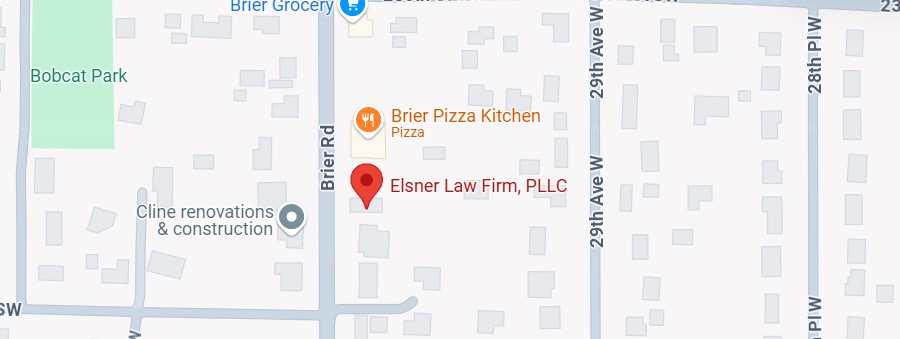Driving symbolizes independence, connecting us to our community and supporting our daily activities, from going to work to accessing health care, and is a key component of daily living. Yet, for those recovering from a traumatic brain injury (TBI), the road back to driving can be complex, as driving is a complex task that requires the integration of cognitive, sensory, physical, and behavioral abilities, and is often wrought with safety concerns. Understanding the impact of a TBI on driving abilities is crucial for a safe return to the driver’s seat. Driving after a brain injury presents unique challenges due to the potential effects on physical and cognitive functions.
Understanding Traumatic Brain Injuries and Driving
Traumatic brain injuries can have a profound effect on a person’s ability to drive safely. These brain injuries vary widely in severity, and the impact on driving skills depends on the extent and location of the injury. For many TBI survivors, changes in cognitive abilities, physical coordination, and even behavior can make driving a complex and potentially risky activity. Because driving requires quick thinking, good judgment, and precise motor skills, any deficits in these areas can compromise a person’s ability to drive.
A comprehensive driving evaluation is essential for anyone considering a return to driving after a TBI. This process, often led by a certified driver rehabilitation specialist, assesses both physical and cognitive abilities to determine if it is safe to resume driving. The evaluation may include tests of reaction time, memory, attention, and the ability to handle real-world driving situations. Legal requirements may also dictate when and how a person can return to driving, making it important to consult with medical professionals and driver rehabilitation experts. By understanding the unique challenges posed by traumatic brain injuries, individuals and their families can make informed decisions about driving and take the necessary steps to ensure safety on the road.
The Journey Back to Driving Post-TBI
The desire to drive post-TBI is strong, with research suggesting that 60% to 70% of TBI patients eventually resume driving. Studies show that a significant percentage of TBI patients return to driving, but this outcome depends on factors such as injury severity, cognitive recovery, and access to formal driving assessments.
Recovery paths are diverse; some TBI patients may need to adapt their driving habits to ensure safety. Modifications might include driving less, sticking to familiar routes, avoiding heavy traffic or poor weather conditions, choosing times or routes with less traffic, and minimizing distractions.
Cognitive Impairments and Their Impact on Driving
Cognitive impairments are a common consequence of traumatic brain injury and can significantly affect a person’s ability to drive. Safe driving relies on a range of cognitive skills, including attention, memory, problem-solving, and the ability to make quick decisions. After a brain injury, these abilities may be diminished, leading to challenges such as slower reaction times, difficulty processing information, and trouble navigating complex driving environments.
Medical professionals often use tools like the trail making test to assess cognitive function and identify areas of concern. An occupational therapist can conduct a preliminary evaluation to determine whether further driving assessment is needed. Cognitive deficits may manifest as unsafe driving behaviors, such as missing traffic signals, getting confused in unfamiliar areas, or struggling to respond to sudden changes on the road. In some cases, cognitive rehabilitation and targeted training can help improve these skills, supporting a safer return to driving. Ultimately, the goal is to ensure that individuals with cognitive impairments are able to drive safely, reducing the risk of accidents and protecting both themselves and others on the road.
Physical Impairments and Their Impact on Driving
Physical impairments resulting from a traumatic brain injury can also play a major role in determining whether someone can drive safely. These impairments may include reduced motor skills, problems with visual acuity, or limitations in peripheral vision—all of which are critical for operating a vehicle. For example, difficulties with the lower extremities can affect the ability to use pedals, while issues with hand coordination can make steering challenging.
Fortunately, adaptive equipment and vehicle modifications can help many individuals overcome these barriers. Devices such as hand controls, modified steering wheels, and other adaptive driving equipment can be tailored to meet specific physical needs. A driving simulator may be used during the assessment process to allow individuals to practice driving in a safe, controlled environment before getting behind the wheel of a real car. It’s important to work closely with a medical professional to evaluate both physical and cognitive abilities, and to ensure all legal requirements are met before resuming driving. If driving is not possible, exploring other transportation options, such as public transportation or ride-sharing, can help maintain independence and mobility. The ultimate priority is to ensure that anyone with a brain injury can travel safely, whether by driving or by using alternative means.
Assessing Driving Ability
A TBI can impair critical driving skills such as assessing a person’s ability to drive safely post-injury. These skills can be affected in the following ways:
- Vision and hand-eye coordination
- Reaction time
- Multitasking abilities
- Concentration and memory
- Lane maintenance and safety awareness
Early detection of these impairments is crucial. Many rehabilitation programs provide guidance on returning to driving, incorporating family, friends, and healthcare providers in the decision-making process, with family members playing a key role in supporting and evaluating readiness. However, self-awareness of one’s driving capabilities post-TBI can be challenging, underscoring the importance of professional evaluations. It is essential to consult a doctor, as doctors are trained to assess a person’s ability to drive after a brain injury and can determine if further tests or interventions are needed before returning to driving.
Recognizing the Red Flags
Warning signs of unsafe driving include:
- Inconsistent driving speed
- Missing traffic signs or signals
- Difficulty judging distances
- Delayed decision-making
- Frequent frustration or confusion
- Regular accidents or near-misses
- Difficulty staying in the lane
- Getting lost, even in well-known areas
If you experience any of these warning signs, you should avoid driving until you have been evaluated by a healthcare professional. In some cases, individuals may need to cease driving temporarily or permanently based on professional recommendations.
Professional Evaluations and Training
Driving evaluations are essential in gauging one’s readiness to return to driving post-TBI. These evaluations usually encompass:
- Preliminary Evaluation: An assessment of physical and cognitive skills relevant to driving.
- Driving Test: A formal driving test, which may include on-the-road evaluations or assessments by medical professionals, to determine if the individual can safely resume driving.
- Road Test: An on-the-road or simulator test examining the ability to drive safely under various conditions.
For some, additional training with a certified driver rehabilitation specialist (CDRS) may be necessary, focusing on improving specific skills impacted by the TBI. Technological modifications and adaptive driving aids can also support individuals with physical limitations in safely operating a vehicle, including adaptations for the steering wheel. Assessing physical abilities such as strength, coordination, and grip is crucial for effective use of the steering wheel and overall vehicle control.
The goal of these evaluations and training is to ensure individuals become safe drivers after TBI.
Legal Considerations and Support
It’s vital to familiarize oneself with state laws regarding driving post-TBI, which may include restrictions or the need for a formal evaluation. The licensing bureau is responsible for verifying your medical fitness to drive after a traumatic brain injury, and you may be required to undergo assessments before being granted a valid driver’s license. A medical condition such as TBI can affect your eligibility to operate motor vehicles, and legal procedures may be necessary if your license is suspended or revoked. Financial support for evaluations and modifications might be available through State Vocational Rehabilitation agencies. If you have suffered a TBI in an accident, consulting a personal injury attorney can help you obtain legal support and compensation.
When Driving Isn’t an Option
For individuals where driving is no longer safe or feasible, exploring alternative transportation options—including other forms of transportation such as public transit, family assistance, or vehicle modifications—becomes essential.
Conclusion
Regaining the ability to drive after a TBI is a significant milestone in reclaiming independence. It requires a careful and coordinated approach, including professional evaluations, possible adaptations, and a clear understanding of legal obligations. With the right support and adjustments, many can successfully navigate the journey back to driving safely. Call us today for your free consultation 206-447-1425.






